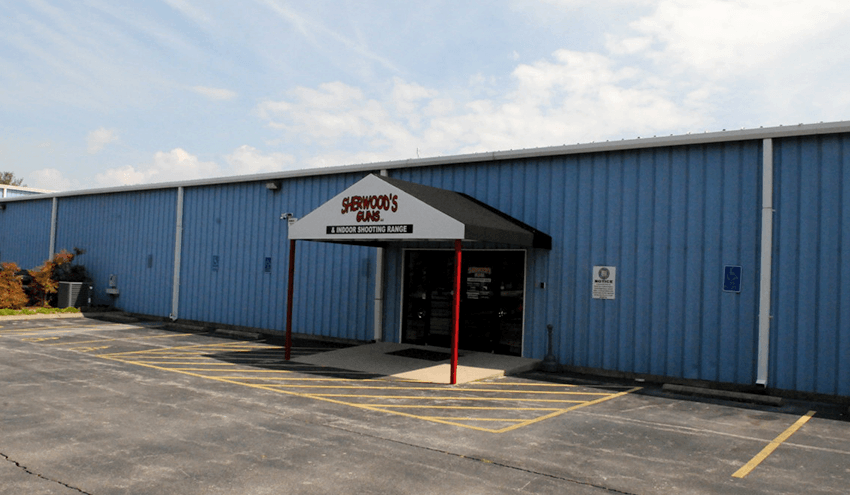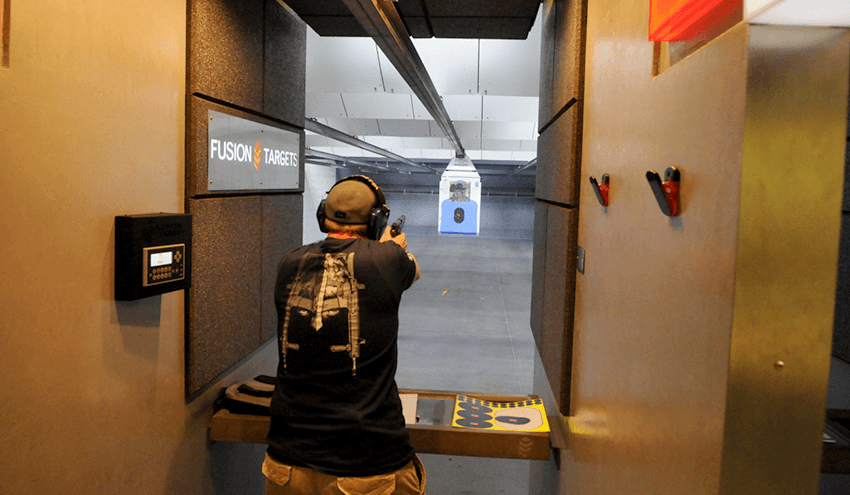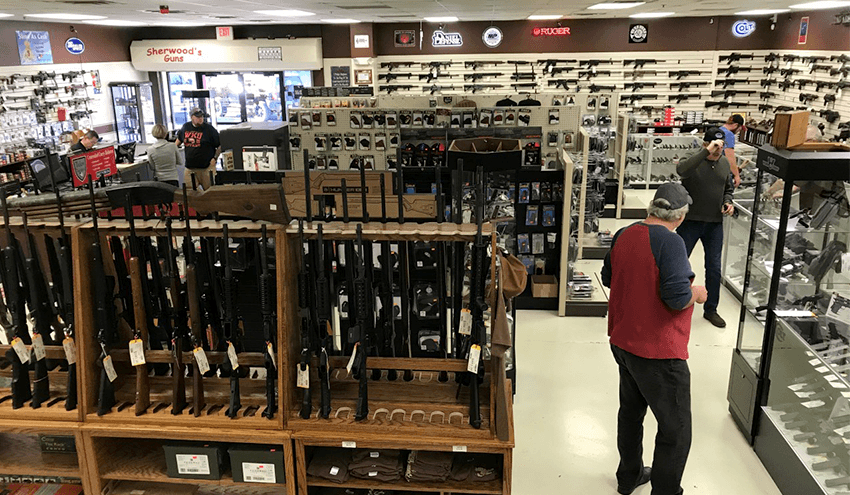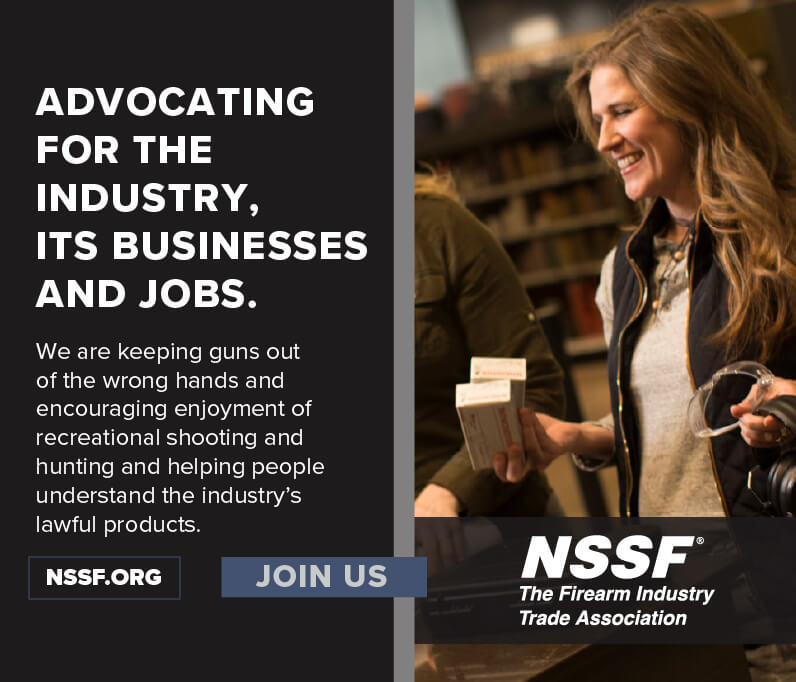 Back to News
Back to News
November 13, 2019
From the Counter: Sherwood’s Guns, Bowling Green, Kentucky
“From the Counter” is NSSF’s timely industry perspective from firearm retailers across the country. Our goal is to identify and highlight innovative market strategies helping retailers compete more successfully. Lessons learned are drawn from an array of regions with diverse market economies. For this column, we focused on an independent, midsized, central-Kentucky retailer.
Sherwood’s Guns, Bowling Green, Kentucky
In 2010, Sherwood Davis and his wife opened their first brick-and-mortar retail gun business. It was a 3,000-square-foot building with 12 parking spaces. The family had a remarkable run during its first four years, where the focus was all guns.
“We stocked firearms almost exclusively, with just a few accessories. The climate was highly volatile, as politics continued to move the barometer on firearm sales,” said Sherwood Davis, Owner.
When a local, newly constructed range experienced financial difficulties, the duo saw an opportunity to expand. “We had plans and were ready to build a range. This opportunity changed everything,” said Davis.

The new property was in the perfect location and, at nearly 28,000 square feet, it boasted a sea of parking. Near the crossroads of Highway 231 and I-65 and next door to a mall, it also benefitted from a well-traveled corridor.
The Davises purchased the property, modified the facility, improved the air circulation system, lanes, and classroom and made extensive retail improvements.
Today, this retailer stocks nearly 3,000 firearms and has a 12-lane indoor shooting range. Eleven full-time employees staff the enterprise. The inventory is a mix of used and new firearms, traditional hunting and defensive guns. The store carries a significant inventory of used firearms and is open 9:00 a.m. to 6:00 p.m. Monday through Saturday.

Facing the Elephant in the Room
The new location allowed for expanded inventory. However, in just two years, price competition on handguns had become untenable. With increasing local retail pressure — the location was so prime, a Dick’s, Gander Mountain, Cabela’s and Dunham’s opened in a less than two-mile radius of the store — Sherwood’s needed to change its profit structure.
“This is Kentucky. Our customers are used to discount pricing. We had to face and come to grips with a lower profit margin. Today, on a new gun, it hovers around 10 percent. In 2010, it was around 20,” said Davis.
In turn, this changed the store’s focus to accessories, where the profit margins are notably higher. The first stop was firearm holsters.
“Our holster inventory is extensive. Many first-time customers visit us because our selection is so wide,” said Davis, noting that customer feedback is critical to the right inventory.
“I learn something every day talking to a customer,” he added. One of those moments was when a customer asked for a left-handed holster. Even Davis had difficulty finding the right one.
“Today we have a left-handed section. Now lefty shooters come in all the time. Although it’s not a game-changer, it is something our competitors don’t have,” he said.
Mixing New & Used Handguns
Used-firearms sales are a priority for the shop. At the handgun case, used and new are mixed together by category and brand. Used guns wear a yellow sticker, new guns get blue. This allows a customer to see a new Glock right next to a used one.
“It creates an automatic interest in the used gun. If the guns were separated and we kept a used handgun at a different counter, the buyer may not ever see it,” said Davis.
The strategy is effective on three fronts. First, it shows the customer an immediate alternative. Second, it provides immediate price comparison and third, it demonstrates a wider selection.

At Sherwood’s, Davis and two salespeople buy guns. He mentors his employees to create a sense of trust and customer loyalty during these transactions. According to Davis, one of the best ways to do that is to get the seller to name a price, though typically the salesperson has formulated the used gun value before discussing a number.
“We ask what they want. Often, because we know what the number should be, we can say yes. Or at least close. This can really please the customer,” he said.
Certainly, there are times when the distance between the customer’s and the store’s price is too wide. Davis has a clear subtle rule when the deal can’t be achieved: Apologize and be sincere.
“If we can’t close the gap, even if it’s because the customer’s unreasonable, we are respectful when we say no. We politely explain why,” he said, adding that he’s witnessed other stores humiliate the customer during this kind of transaction. “We’re sensitive to the emotional investment the seller has in their gun. It may not work this time, but it will make them feel welcome and willing to try again.”
Guarding Against Employee Poaching
With an array of competitors surrounding this store, the shop is a prime candidate for other retailers to lift a talented Sherwood’s staff member.
“We have lost just a couple, it can happen. But if the employee has come to us for a job, we are far ahead of the game,” he said. Most of the store’s hires have come through word of mouth, and many staff members have also simply walked in the door and asked for a job. “Our range officer was the Bowling Green P.D. training supervisor. He’s the perfect fit for our range, and I knew it the second he walked in the door,” he said.
Another talented find was a former used-car salesperson.
“This gentleman loves his job. He’s relieved to be selling a product that will not disappoint the buyer. He understands what it means to close a sale; while he is engaging and friendly, he’s a closer,” he said.
Lessons Learned from the Counter
Adjusting Profit Targets — Markets change, customers change and politics change. Count on it and prepare for it. Most importantly, adapt to it. Sherwood’s modified its inventory to focus on higher-margin items like accessories, and in turn has provided area customers gear they want and need that the area chain retailers won’t supply.
Showing Respect — One of Davis’s strongest retail practices is working to keep opportunities open to the customer. When the store must say “no,” it’s done carefully and with respect. This approach engenders the buyer’s trust and creates strong customer loyalty.
Protecting Your Home Turf — When the wolves come to steal your employees, protect your company with competitive salaries and benefits. This retailer mentors and treats its employees like family, and that has talented people seeking employment rather than the store having to find them.
You may also be interested in:
https://www.nssf.org/nssf-launches-shot-university-online-for-ffls-ranges/
https://www.nssf.org/in-a-competitive-hiring-market-bonus-benefits-can-win-the-day/
Categories: BP Item, Featured, Retailers, Top Stories









